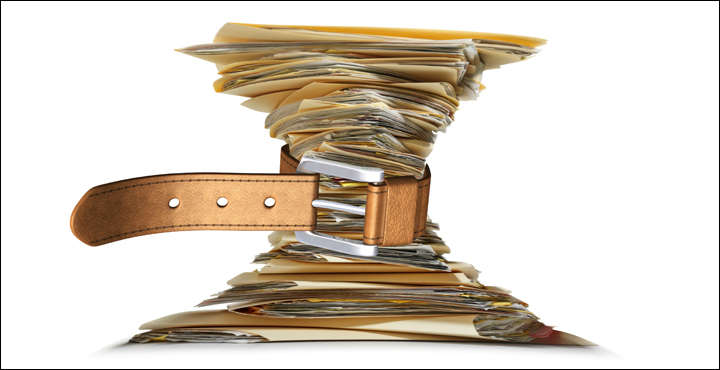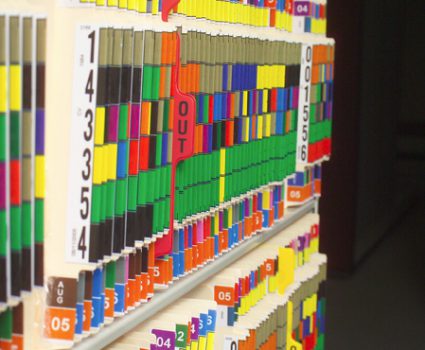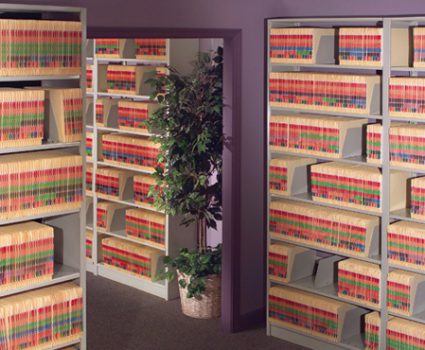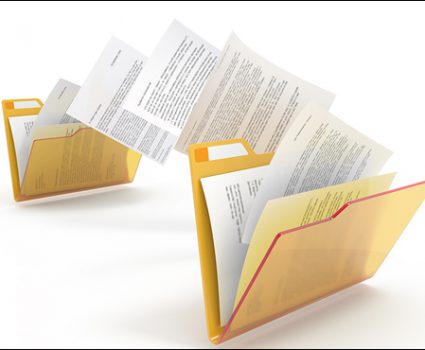
A Paperless Office might be impossible, but you can go “Paperlite”
Unless printers become obsolete, eliminating paper from offices will continue to be a challenge. That means records managers will have to contend with the storage costs, extended retrieval times, and access concerns associated with these documents for some time yet.
Even if you can’t go entirely paperless, you can put the processes in place to reduce your paper load. The first step is to establish a records management system that applies records management best practices, and this blog post explains how you can do that.
1.0 Implement Records Management Best Practices
Lightening your organization’s paper load requires a careful, structured look at official records. Following records management best practices requires establishing classification and retention schedules for those records. These governance tools establish organization-wide categories for records based on their business functions. These tools also help employees create and work with less paper.
1.1 Develop a Records Classification System and Retention Schedule
The different elements that make up records classification all play a direct and active role in making your office paper-lite. Here are some of the elements to consider including in your organization’s corporate records classification:
- Office of Record: Designate a department or other organizational group responsible for creating and retaining records of a given business activity.
- Medium of Record: More organizations are deciding that officials records should be kept in electronic form, not paper. Where this is the case, consider having a “Medium of Record” field as part of the classification. Then, when users encounter records categories that are designated for electronic retention, they can better identity and purge paper convenience copies that are no longer needed.
Your retention schedule mandates how long records in each category must be kept to meet legal and operational requirements, and establishing an effective retention program can help you reduce the amount of paper you store by one-third. How? Because your schedule details exactly what you need to keep and for how long, you are in a position to control the growth of your records collections.
Even if your schedules dictate long retention periods, they are important to the paperlite office for two main reasons:
- Eventual disposal is better than never disposing at all.
- Without a retention schedule, typically everything gets kept, including records with short retention periods.
2.0 Create a Disposal Policy
From a paperlite perspective, one of the most important elements of any effective records management program is a statement or directive authorizing secure destruction of non-record and/or transitory materials that are no longer useful.
Your records management program should support this disposal policy by developing detailed criteria for a document to be identified as an official record. Such criteria should provide concrete, specific guidelines to support daily decision-making, yet remain flexible enough to provide for exceptions.
3.0 Develop and Implement a Records Disposition Process
The development and implementation of a records disposition process is a key component of the movement to paper-lite.
Once a record has reached the end of its scheduled retention period, it is usually eligible for destruction. All record destructions should be accounted for via a documented approval process.
Many organizations require stakeholders to review lists of records for which destruction is pending. Where necessary, stakeholder departments can identify any records that are relevant to actual or planned litigation, audit or investigations.
Once disposal sign-off is obtained, records can be destroyed using shredding, or another method, which provides a reasonable guarantee against information being recoverable.
Next Steps
- Download our Records Retention Starter Kit for more on creating and applying a retention schedule that works for you.
- Watch the Optimize Physical Records video to learn how paper records can be stored, organized and shared the most efficient way possible.
- Talk to a TAB representative about how we can introduce records management best practices in your organization and help you move toward a paperlite office environment.





